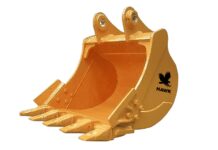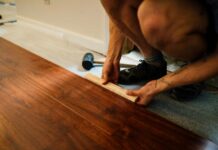Preparations for DOMOTEX 2019 (11-14 January, Hannover, Germany) are in full swing. As part of the build-up, a jury of experts gathered in September to assess a multitude of submissions and select the most creative projects to feature at the Framing Trends showcase.
Staged in Hall 9, Framing Trends is a major DOMOTEX highlight that gives its exhibitors and their ideas added exposure.
It comprises three showcase zones, each with its own distinct perspective on the DOMOTEX 2019 keynote theme, CREATE’N‘CONNECT. The theme focuses on the “network” trend as an important aspect of flooring in the sense that floors are unifying, connecting elements of room design. Floors and flooring provide the very foundation for the rooms in which we live and work. The Flooring Spaces zone is where exhibitors and other providers from the flooring industry can stage their creative interpretations of the keynote theme, connect with visitors and position themselves as trendsetters. The NuThinkers zone is an opportunity for students to present their innovative projects and concepts inspired by the connectivity megatrend.
And the Art & Interaction zone explores the keynote theme in a sensory feast of installations from the worlds of art and design.
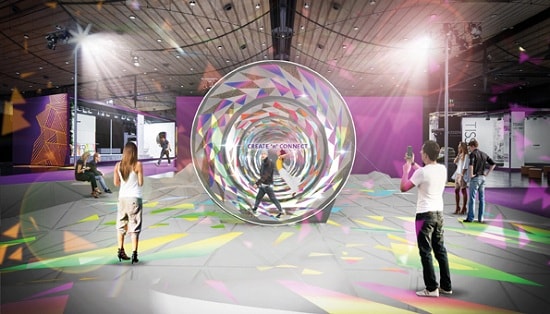
There are only a limited number of Flooring Spaces available, hence the need for an expert jury to decide which of the submitting companies will get to showcase their ideas and designs inspired by CREATE’N’CONNECT. The jury was once again headed by internationally renowned architect Peter Ippolito of Ippolito Fleitz Group, Stuttgart, who was joined by previous jury members Susanne Schmidhuber, founder and partner at SCHMIDHUBER, Munich, and Dr. Susanne Kaufmann, research associate at the Staatsgalerie Stuttgart art museum as well as one newcomer: Mr. Thomas Hundt, cofounder of the creative agency “jangled nerves” and Professor of Media + Space at the Stuttgart University of Applied Sciences.
Entries of great breadth and depth
The final say on who will star at the special display went to Peter Ippolito as the jury’s chair. For him, the new CREATE’N’CONNECT keynote theme elegantly states the flipside of the 2018 theme, which was dedicated to the individualization megatrend in which everyone creates their own unique universe. “The flip-side is that, in today’s society, people are seeking community and cohesion. They are looking for values and, indeed, for boundaries in a world that has become so boundless,” he says, noting that the connectivity theme – the question of what connects us with what values – can be very exciting when translated into three-dimensional space. “From an interior design standpoint, the floor is always a medium that can create, connect and expand space.
That is our fundamental assumption.”
Susanne Schmidhuber, who is the jury’s spokesperson, emphasizes the breadth and pleasing depth of the proposals submitted this year. “The submitter numbers are roughly the same, but the quality – already high last year – was even better this year. Content-wise, this year’s projects deal with their subject matter in greater depth.” This is particularly true of the projects submitted by university groups, the jurors noted.
The following examples provide an insight into the jury’s selections for Framing Trends.
Flooring Spaces: Creative product showcase by flooring manufacturers
The “DOMOTEX Wood Lifecycle” project by Milan-based design, communication and architecture firm Total Tool Milano shines the spotlight on wood, racing the material through seven life cycle stages, from tree in the forest to recycled product. It focuses on the intrinsic value and versatility of wood as a natural material, and in doing so, uncovers innovative and inspiring new uses of wood for architects and interior designers. The project comprises multiple exhibits that illustrate particular characteristics, applications and qualities of wood as a material. As part of the project, manufacturers from various sectors will exhibit such products as natural-wood furniture, wood flooring solutions and recycled-wood panels as examples of the various stages of the wood production and supply chain. The “DOMOTEX Wood Lifecycle” project will also function as a research and development platform, highlighting various key trends, such as environmental protection and sustainability, energy efficiency and innovative material use. “Wood is one of the oldest materials in human history, yet, thanks to technological innovation, it never ceases to surprise us with exciting new applications,” says Total Tool Milano design director and curator Giulio Ceppi.
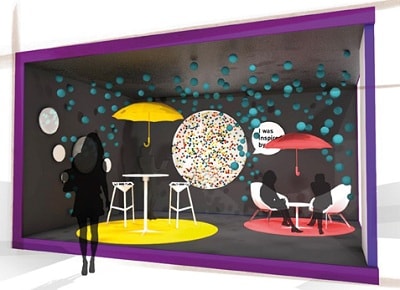 The Flooring Space project submitted by the Indian carpet manufacturer M.A. Trading is called “Rain of Stories”. As an intercultural team, M.A. Trading
The Flooring Space project submitted by the Indian carpet manufacturer M.A. Trading is called “Rain of Stories”. As an intercultural team, M.A. Trading
works in a very connected way, and sees design not just as an individual creative act but also as a shared endeavor and a crossroads of multiple areas of expertise. “Rain of Stories” narrates the creation stories of various products both metaphorically and personally, and builds real connections between people by having the creators of the various products present. In keeping with the rain idea, there are umbrellas, symbolizing special spaces for creativity and dialogue, beneath which visitors are invited to discuss materials, products and ideas and thereby jointly create something new.
This year, SCHMIDHUBER has once again been selected for participation in the Flooring Spaces showcase with a project inspired by DOMOTEX’s lead theme. Dubbed the “Connectivity Wheel”, the project has both visual and interactive appeal. Visitors will be able to climb into the wheel and set it in motion by walking, thereby transforming their physical movement into an act of creation in which the light reflected from numerous colored glass facets interacts with surrounding floor coverings by Carpet Concept. In this way, the wheel combines light and material to provide a unique sensory experience for visitors.
Art & Interaction: the artistic side of CREATE’N’CONNECT
As an art expert, Susanne Kaufmann was the jury member responsible for assessing the quality of the projects submitted for the Art & Interaction section of Framing Trends. “Networking and connection are a big part of art history,” she says. “Connectivity is an exciting theme because it stretches back over the centuries and also finds contemporary expression at DOMOTEX in the form of two very challenging artistic perspectives.”
One of these perspectives is the creation of American artist Rena Detrixhe, who uses materials from nature to critically examine the relationship between people and the world around them. For her “Red Dirt Rug” installation in the Art & Interaction section of Framing Trends, she collects red soil from the U.S. state of Oklahoma and fashions it into an ephemeral rug.
For this, she meticulously sifts the soil, then refines it into a fine red dust which she spreads out as an even layer. Into the fine, sandy material she then imprints geometric patterns and ornamental designs using stamps cut from the soles of old shoes. Her vision in creating “Red Dirt Rug” is to draw attention to the massive impact on the landscapes of her home state caused by the extraction of natural resources like oil and gas. For Rena Detrixhe, CREATE’N’CONNECT is an exploration of our relationship with the earth, and her work is an attempt to question “the tension between nature and human impact while suggesting the ubiquitousness and preciousness of the earth just below our feet.”
The other challenging artistic perspective that will be on show in the Art & Interaction section is a showcase by Vanessa Barragão, of Portugal. At her design studio, Barragão uses artisanal techniques to craft carpets and tapestries from textile industry waste products. Having grown up by the seaside, she has a strong sense of connection to the sea that inspires her work. Using techniques such as crochet, macramé and knitting, she recreates three-dimensional coral reefs from recycled materials. Barragão lives in Porto – the heart of Portugal’s textile industry – and is therefore painfully aware of the damage the industry does to the environment, especially to the world’s oceans, which absorb 90 percent of the world’s air pollution and are therefore warming up, she explains. Part of her aim with her work is to encourage us to re-think the way we treat the environment while at the same time “raising awareness among viewers of the dangers associated with coral reef die-off.”
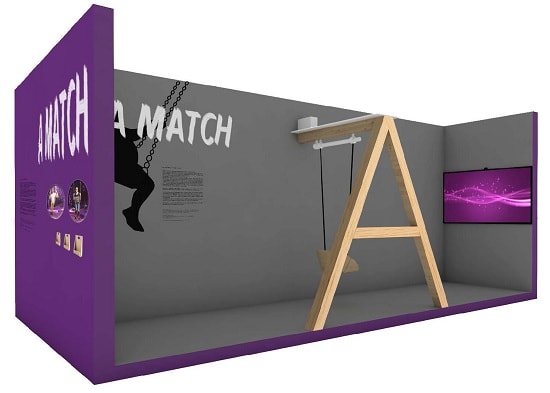
NuThinkers: Young and visionary ideas from the ground up
Among the forward-looking concepts selected for the NuThinkers section of Framing Trends is a project called “A Match!” Developed by Sarah Busching of Wismar University of Applied Sciences (HS Wismar), the project explores the technological aspect of the connectivity megatrend. It involves two swings set up side by side, but separated by a partition, on which two people try to swing in unison.
The swings are on a wooden platform, and their cables are attached to metal rods that are equipped with potentiometers to measure rotational resistance. This set-up measures the swing motion of each person, which can then be displayed as waveform graphics on a monitor. The key point is that the participants can only see each other’s video image if they are swinging in unison, hence the name, “A Match!” If they achieve a match, the two people get to meet each other. They can then use an app to e-mail their personalized wave graphics and snapshots along with quotes from social media. The app was designed by students from the Communication Design department of Wismar University of Applied Sciences. In this way, the people on the swings are able to connect with the outside world and share their experiences.
The NuThinkers zone will also feature “connect it³”, another interactive project by another HS Wismar student, Sarah Strenge. Strenge’s project is based on triangular modules, each of which is made of two-ply plywood covered with carpet materials of various colors and which can be connected edgeto- edge with other modules to form three-dimensional shapes and sculptural forms. The floor of the display where “connect it³” is set up has light and dark gray areas, effectively demarking the information zone from the interaction zone used for the three-dimensional shapes and sculptural forms. The idea is that, by fashioning various shapes and forms from the carpet triangles, DOMOTEX visitors will interact with the materials and, in doing so, will form a network that changes constantly during the show.
“The student contributions show a strong desire to engage critically with questions raised by the connectivity theme,” comments juror Thomas Hundt. “Questions like: Who do my data belong to? And: Do I really want to disclose my data? At the same time, we can see in these contributions a certain yearning for physical presence. For example, there are projects that are designed and set up with mathematical precision, but which are then implemented haptically and physically and even involve elements of play.”
Connectedness is an important aspect of flooring design. Floors inspire us, give us orientation and set the stage for human interaction. Just as in 2018, the creative installations and productions on display at the Framing Trends showcase at DOMOTEX 2019 will be both a visual highlight and a vibrant industry focal point that will inspire fruitful cooperation and interaction among exhibitors and visitors from all around the world.






